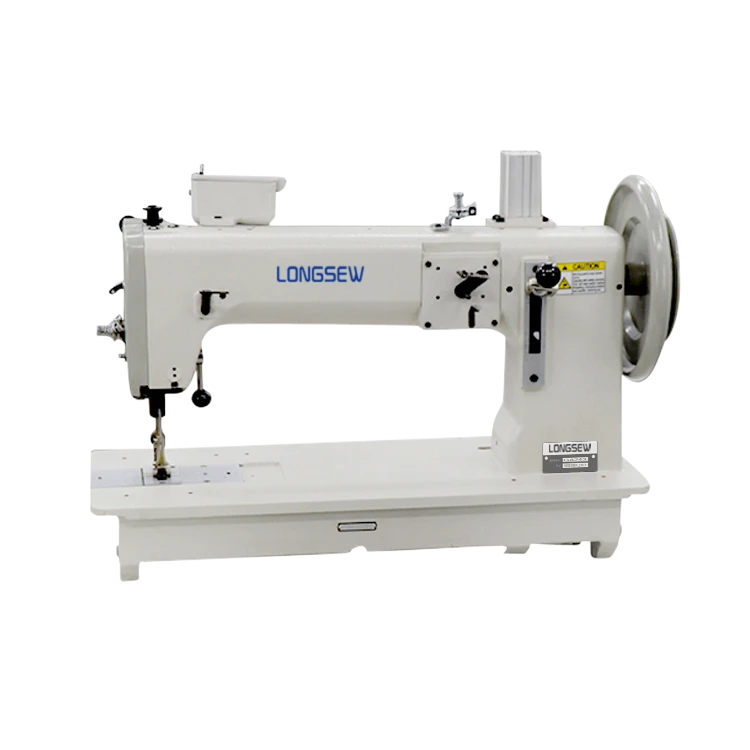lock stitch sewing
The Art and Science of Lock Stitch Sewing
Sewing is a fundamental skill that has been practiced for centuries, serving both practical and artistic purposes. Among the various stitching techniques, lock stitch sewing stands out for its reliability and versatility. This method, which interlocks two threads to form a durable seam, is the backbone of many sewing projects, ranging from simple garment construction to intricate quilting.
The Mechanism Behind Lock Stitch Sewing
The lock stitch is formed using a sewing machine that includes two primary components the needle and the bobbin. When the needle punctures the fabric, it pulls the upper thread down through the material and forms a loop. Simultaneously, the bobbin thread, which is situated beneath the fabric, is drawn up to interlock with the needle thread. This interlocking action creates a secure stitch that effectively holds fabric layers together.
One of the remarkable aspects of lock stitch sewing is its simplicity and efficiency. The sewing machine's design allows for high-speed operation, making it the preferred choice for both amateur sewers and professional tailors. The consistency of lock stitches ensures that seams maintain their integrity over time, making them ideal for items that endure daily wear and tear.
Importance of Proper Tension
The key to mastering lock stitch sewing lies in understanding and managing thread tension
. Proper tension ensures that the stitches are neither too loose nor too tight, which can lead to issues such as fabric puckering or thread breakage. Most sewing machines come equipped with adjustable tension settings that can be calibrated according to the type of fabric and thread being used.When working with lighter fabrics, such as chiffon or silk, it is crucial to lower the tension to avoid damaging the delicate fibers. Conversely, heavier fabrics like denim or canvas require higher tension settings to ensure the robustness of the seam. Achieving the right tension not only enhances the quality of the stitches but also contributes to the overall aesthetics of the finished product.
lock stitch sewing

Advantages of Lock Stitch Sewing
Lock stitch sewing has numerous advantages that make it a favored choice among sewers. One of the primary benefits is its strong and secure seams. The interlocking nature of the stitches significantly reduces the likelihood of unraveling, making it suitable for a wide range of applications including clothing, upholstery, and accessories.
Additionally, lock stitches provide a clean finish, presenting a neat appearance both from the front and back of the fabric. This is particularly important in garment construction where visible seams can compromise the overall look of the product. Moreover, the ability to neatly conceal the bobbin thread beneath the fabric adds to the polished finish of the work.
Lock stitch sewing is also highly versatile. It can be used for straight stitching, zig-zag patterns, and even decorative applications, allowing sewers to express their creativity while ensuring durability. This adaptability makes it an indispensable technique in various sewing projects.
Common Applications
In the realm of fashion, lock stitch sewing is used extensively for constructing garments such as shirts, dresses, and trousers. It is particularly favored in the industry for assembly-line production where speed and efficiency are crucial. The consistency of lock stitches allows manufacturers to produce high volumes of garments without compromising quality.
Beyond fashion, lock stitch sewing plays a vital role in home decor, as it is employed in crafting items like curtains, cushion covers, and quilts. Quilting, in particular, benefits from the reliability of lock stitches, as they allow for intricate patterns to be secured without the risk of seams coming apart.
In conclusion, lock stitch sewing is more than just a technique; it is an essential skill that encompasses both art and science. The ability to create durable, aesthetically pleasing seams makes it a go-to method for sewers of all levels. As technology continues to evolve, so too will the tools and techniques we use, but the fundamental principles of lock stitch sewing will remain relevant, securing its place in the world of textile creation for years to come. Whether you are a beginner or an experienced seamstress, mastering this technique opens up a world of possibilities for creativity, innovation, and craftsmanship.
-
Boost Production Efficiency with a Pattern Sewing MachineNewsAug.29,2025
-
Industrial Excellence with the Best Heavy Duty Sewing MachineNewsAug.29,2025
-
Precision and Power with the Best Pattern Sewing MachineNewsAug.29,2025
-
Reliable Bulk Packaging Starts With the Right FIBC Sewing MachineNewsAug.29,2025
-
Advanced Packaging Solutions: Elevate Productivity with Jumbo Bag Sewing Machine and Industrial Stitching EquipmentNewsAug.29,2025
-
High-Performance Solutions for Bulk Packaging: FIBC Sewing Machine and MoreNewsAug.29,2025
-
Maximize Efficiency with an Industrial Cylinder Arm Sewing MachineNewsAug.28,2025


























